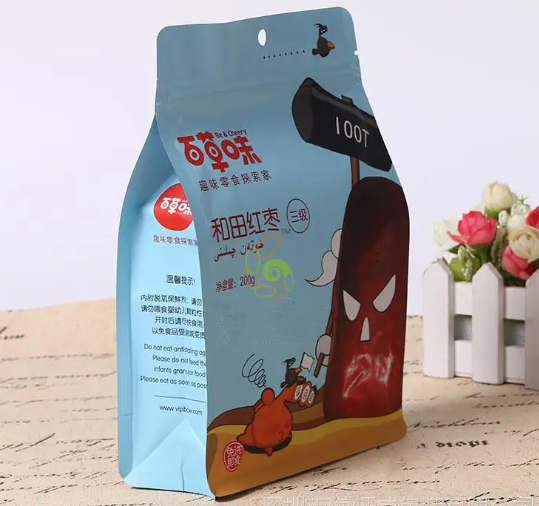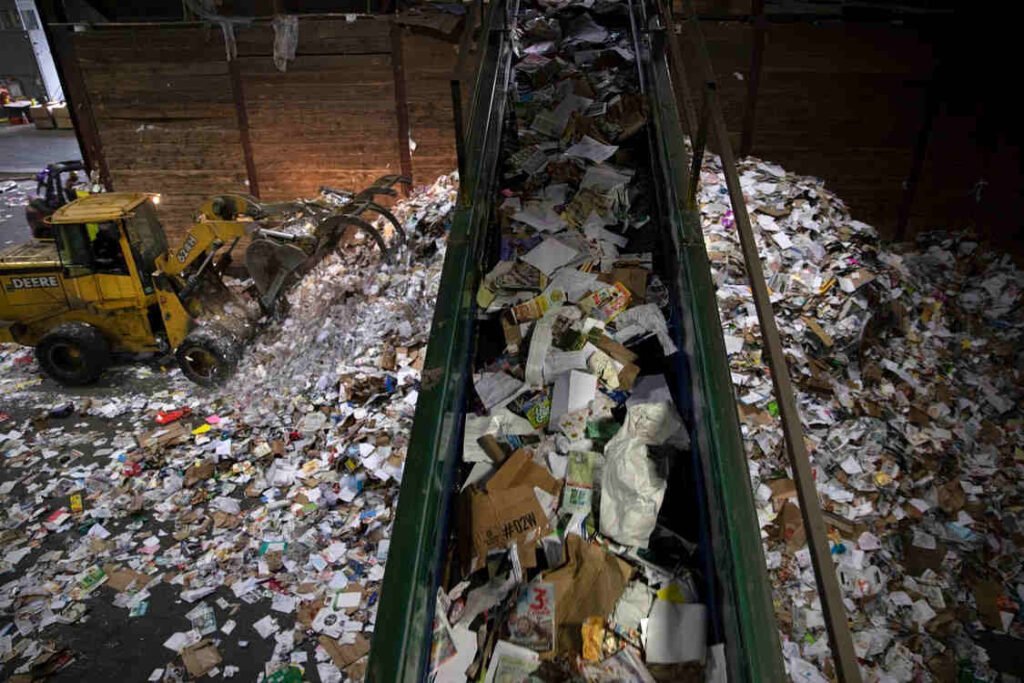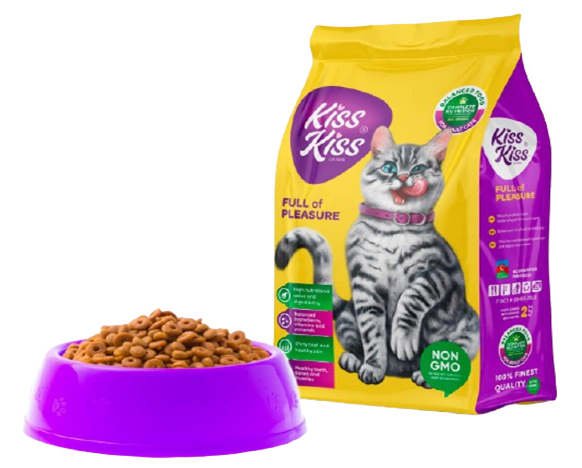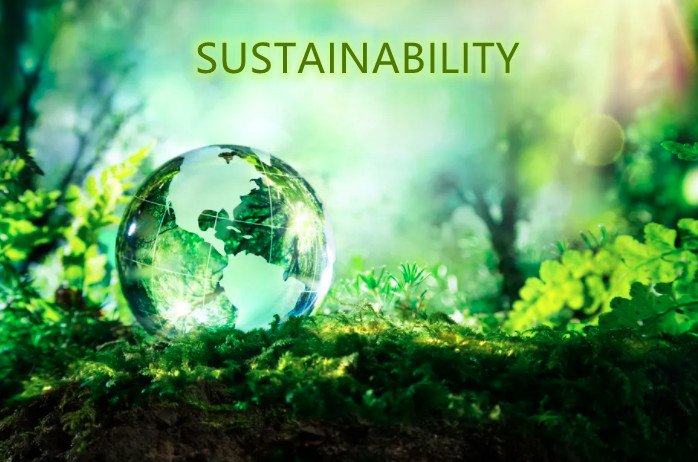8 Difficulties of Mono Material PE Pouch We Are Facing Today
What is Mono Material PE Pouch?
Mono Material Pouch is the pouch made by mono-material; which also means it is made by single type of material. Normally it is mono-material PP pouch and mono-material PE pouch, these 2 types of pouches are the most often see mono material pouch nowadays.
The biggest advantage of mono material pouch is 100% fully recyclable, without the difficulty of splitting or separating various materials.
Mono material recyclable packaging is the hottest product in the industry in the past two years. Many film materials and color printing enterprises are working hard for it and have made a lot of progress. Longdapac is the first Chinese manufacturer to make high barrier mono-material PE pouch
But there are still only a few factories can make mono material PE pouch cause it is still difficult for them.
Today we will the 8 difficulties of mono material PE pouch we are facing today.
It’s an in-depth article that takes 25 minutes to read.
Navigation, click to jump to the section you want to read
8 Difficulties of Mono Material PE Pouch We Are Facing Today
1) Cost
The first major difficulty in market promotion and application is cost.
Taking the current mainstream mono material PE packaging as an example. When using PE instead of traditional PET as the outer layer material, with similar mechanical properties; the cost is higher. For customers, there is no benefit value driven replacement of mono material packaging.
The mono material packaging must first meet the functional requirements, and then the cost is appropriate. It is better cheaper than the current cost, or at least with the same cost; then the customer will consider it.
Why are mono materials expensive now? It is mainly because low-temperature PE materials are basically in the hands of a few large petrochemical enterprises. At present, many emerging materials and equipment manufacturers are more optimistic about the Asia Pacific market. If the material cost of emerging countries in the rapid development period can be reduced in the future, I believe it will greatly promote the application of single material packaging.
Among the current export orders, we know that Germany may be the largest mono material application market. But the actual market feedback is also very negative, especially the inflationary pressure caused by the energy crisis caused by the European war this year. The practical application of recyclable packaging in developed Western European countries is not as extensive as we think, and it is mainly due to the cost factor.

2) Difficulty in production
Because the thermal stability of PP mono material packaging recycled particles is greatly reduced, it can not be widely used in the field of film making. Therefore, PE mono material is still widely used and has practical application value.
PE should have a wider range of settable performance indicators than traditional blow molding or casting PE. Such as thickness uniformity and tension control, low stretching rate, low-temperature heat sealing, printing adaptability, etc.
Compounding and bag making should also be considered. For example, whether the tension control of compound retraction and retraction is controllable or not; Bag making deviation due to unstable base material.
PE currently has two types: unidirectional stretching MDOPE and bidirectional stretching BOPE.
MDO-PE have good applicability and processability. But the equipment threshold for MDO-PE production is not high, and the production standards and feeding of manufacturers differ greatly. All of which leads to great differences in the actual performance of single drawn PE.
Because there is no unified standard, not only the products of different manufacturers differ greatly, but also the products of different batches of the same manufacturer will have differences in performance and quality, which brings great trouble to the application manufacturers. This instability brings high production loss and uncertainty.
Due to the large production volume of BOPE, a batch has good specification stability and good mechanical performance. However, the biggest challenge is poor heat resistance. The processing applicability is not as good as that of single drawing. If the opening temperature is too low, it is difficult for the customer’s packaging machine to adapt. It needs equipment transformation and investment, and is not suitable for making more complex automatic packaging bags.
Therefore, when we replace PET with PE, the primary consideration is its processing applicability. But now the specifications, models and formulas of various enterprises are different, and the deviation is too large.
Sometimes, the width of the same manufacturer and the same batch is only different, such as 740mm width and 1040mm width. Due to the different positions of the slitting width film, the performance will also be different, which will easily increase the processing difficulty and production loss.
After the bag is produced, the use conditions of the automatic packaging machine on the customer’s side should also be considered. The inspection standards of the finished product packaging include sealing setting, packaging efficiency, flatness, and aesthetics. The enterprise should reconsider.

3) Closed-loop profit of the companies
At present, the flexible packaging industry mainly focuses on material research and development and process optimization. It is not difficult to produce mono material packaging. The difficult thing is how to recycle these mono material packaging to form a closed-loop interest chain. Only in this way can the application of recyclable packaging be really promoted.
But who will do it? Where do the profit come from?
At present, the practice we can see may only be guided from the policy level. For example, similar European countries levy a non recyclable packaging tax, and then use the tax collection to subsidize the recycling process, such as the recycling process and the recycling and granulation process.
No break, no stand, only the policy drive and the construction of the environmental protection recycling industry chain can truly realize the value and practical operation of recycling. Breaking the old balance and forming a new closed-loop production chain requires sufficient policy and capital strength to achieve.

4) Sorting and recycling
Plastic sorting and plastic recycling and granulation are another big industry.
The first is the plastic recycling logo: With and without the logo, it can be recycled or not. Recycling must be sorting, named what can be recycled must be recycled.
Let’s take a look at what Switzerland does. There are two ways to recycle plastic waste:
- Supermarket recycling – each supermarket can recycle the packaging of sales products in the mall according to metal (aluminum), plastic (recyclable and non recyclable), and glass;
- Consumer identification classification – plastic products of domestic waste are also placed in different color bins for recycling according to the label of the recycling mark.
In this way, consumers can take the social responsibility of controlling garbage classification rather than recycling enterprises at the source. The environmental protection police has become a hot new occupation in Europe. The punishment is more than 300 Swiss francs and affects the credit record, which is not harsh.
Nestle of Switzerland announced that more than 30% of recycled PE will be included in the plastic packaging in 2025 as the added masterbatch (non food contact layer). Therefore, the changes in the film blowing process and the food safety standards for recycled PE will be unprecedented. It can be predicted that recycled food film grade PE will become a product with commercial value and social value. We will wait and see how to effectively improve its recycling ratio and recycling supply.
Now there is a voice in the industry that PE and PP can be regarded as the same olefin and can be recycled together? It is obvious that retrogression from the result of recycling will not get any official recognition. PE and PP must be separated, otherwise the use value of re granulation will be greatly affected, and the value of the recycling industry chain will be reduced, and a more valuable closed loop cannot be formed.

5) Lack of Recycling companies
Who will treat and granulate the recycled products? How to make profits?
It is believed that recycling enterprises must be profitable industries with long-term investment scale. If the recycling ratio of Switzerland can be realized, it is believed that the global industry prospects will not be any problem.
If the market supply-demand relationship is considered, such as the recycling policy of recycled materials (such as Nestle), it can even be sold at a higher price. If the market is satisfied with the full recycling, its profit is very considerable.
Only circular economy is the most effective way to lock in carbon emissions when carbon peaking and carbon neutralization 2060 goals are achieved.
Only when the recycling companies can get profit from the recycle industry, will more and more companies get into this business

6) Driven by global leading companies
Many brand enterprises have issued the 2025 declaration. By 2025, 25% recycled materials will be used in the packaging, or the packaging will be 100% recyclable. Some leading enterprises in the flexible packaging industry also have similar plans.
Technically, they can do it. But still the first problem, cost!
7) High barrier
At present, the industry is useful to add EVOH or PVA to the coextrusion layer to improve the barrier property.
However, this does involve recycling. How to deal with such materials after recycling? How to reuse it? Is the alcohol washing process in Europe really widely used? How much will the cost of alcohol washing increase for 100% use of indistinguishable PE packaging?
The second is to use high barrier coating to improve the barrier property. However, the barrier stability of the products that have not reached a high level. It still have obvious differences in barrier performance due to the differences in the contents’ canning conditions (temperature, humidity), storage conditions and automatic packaging conditions. At the same time, the high barrier coating also involves the stability and reliability of the coating process. If the coating substrate conditions lead to uneven coating, poor adhesion and tensile resistance, the barrier property will change.

8) Restricted use of plastics
We can see that many western countries have issued regulations on plastic restrictions, and some brand enterprises are also choosing non plastic packaging.
For example, Nestle has used pure aluminum cans of coffee capsules instead of plastic coffee capsules, which has played a very wide market effect. The product quality and recycling value have been improved.
Simplified plastic composite inner packaging, no printing. Paper packaging shall be used for outer packaging.
For biodegradable materials such as PLA and PHA, the problem of industrial degradation grade products is still classification and recovery before degradation. That is to say, not all degradation materials are degraded by natural environment, but must be degraded by industrial treatment after industrial recovery.
There are many problems in this type of substitution, of which the most important are three:
- High production and treatment of carbon emissions;
- High cost;
- Low packaging suitability.
The carbon emission of this kind of materials in the production process is much higher than that of PE and PP, the basic derivatives of petrochemical industry (high carbon proportion, high production energy consumption and high processing energy consumption). Its production cycle, production output and raw material price are not comparable to those of petroleum based materials.
As long as we do not over package and do a good job in recycling, PE base material recyclable packaging is still the most environmentally friendly, most economical and lowest carbon flexible packaging.

What Longdapac can help?
Longdapac is the leading flexible packaging manufacturer from China. We focus on sustainability packaging as you can see below:
Longdapac is the first high barrier MDO-PE film supplier in China.
Longdapac is the first Chinese factory who can make high barrier mono-material PE pouch.
Longdapac recyclable high barrier mono-material PE pouches can meet the recyclability of
- REDcycle in Australia
- CE FLEX in EU
- How2Recycle in USA
- SOFT PLASTIC in New Zealand
Longdapac is a BRC and ISO certified factory with annual capacity of more than 25,000 tons.
Basically Longdapac can satisfy all your recyclable packaging needs, both standard and high barrie
With our professional packaging team on artwork design, bag production, and recyclable material development, we are the first high barrier mono-material pouch manufacturer in China who can make
Recyclable Coffee Bag
Recyclable Tea Bag
Recyclable Dog Food Bag
Recyclable Cat Food Bag
Recyaclable Laminating Pouches
